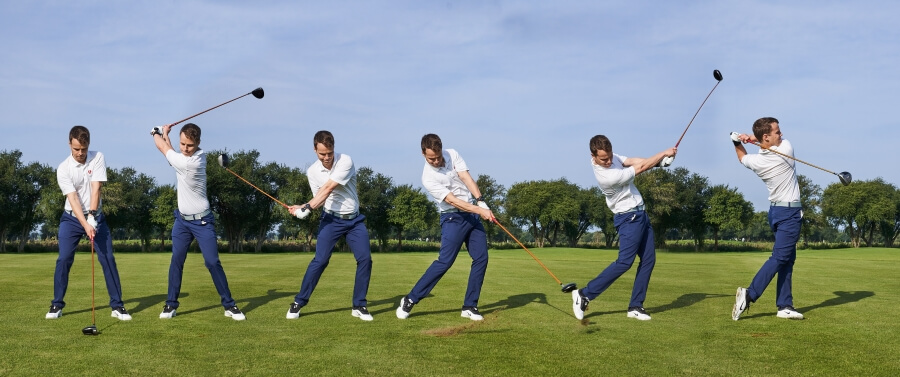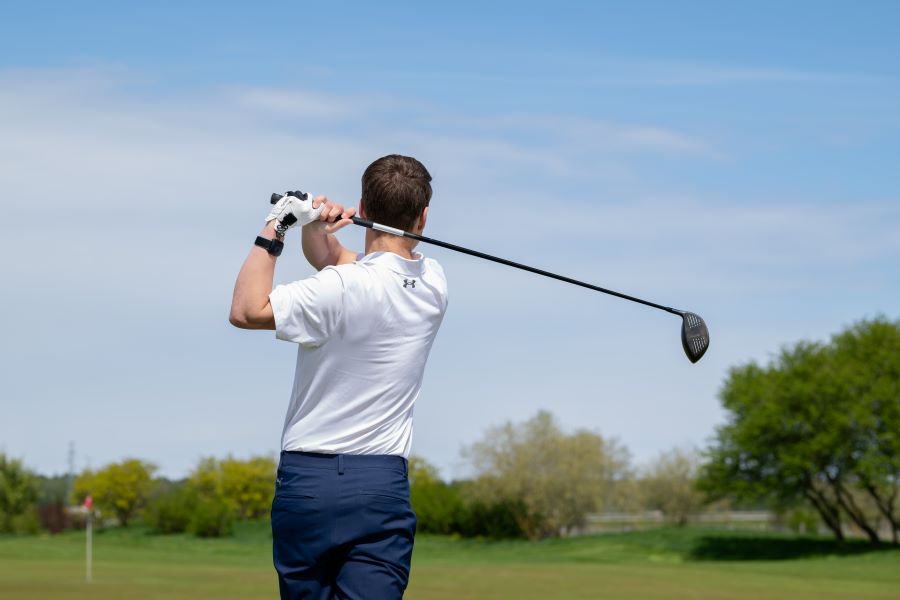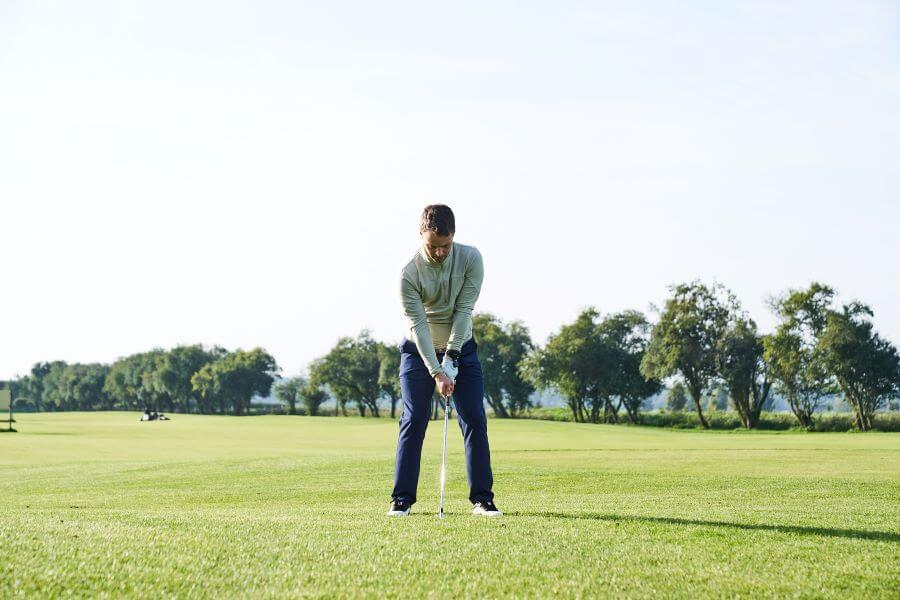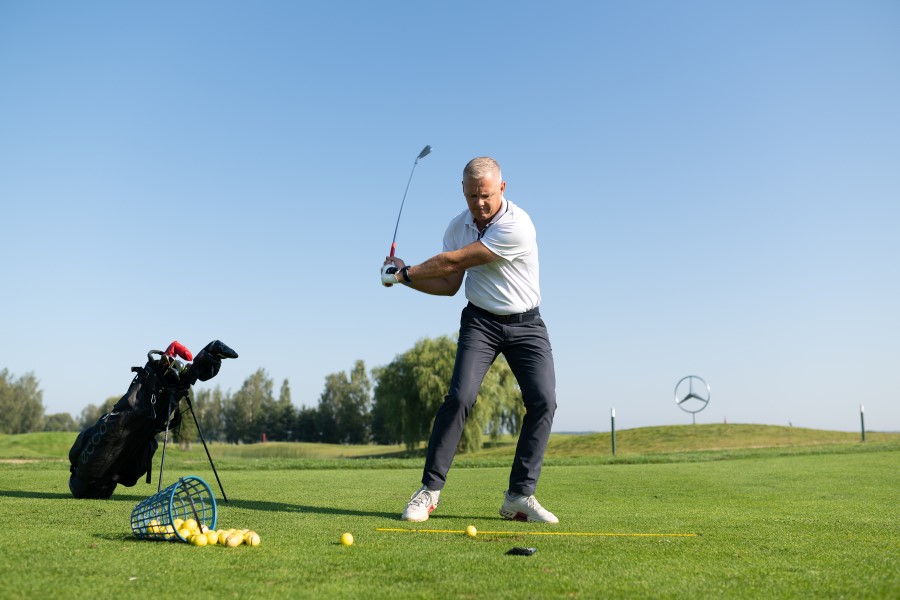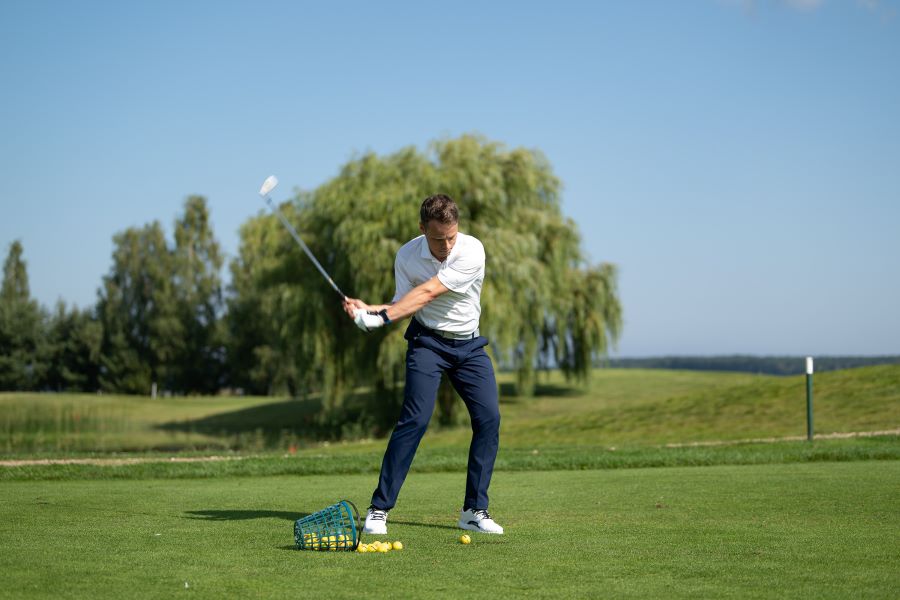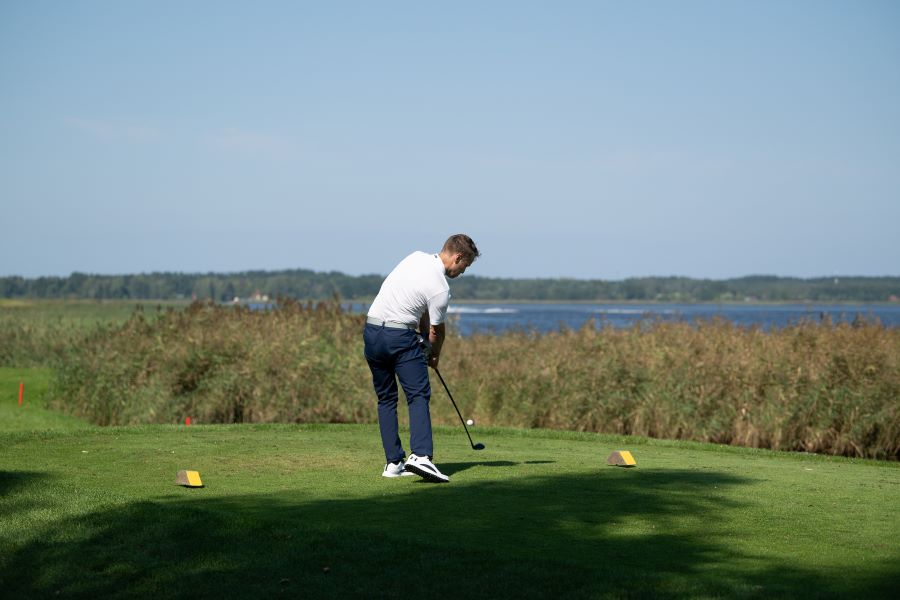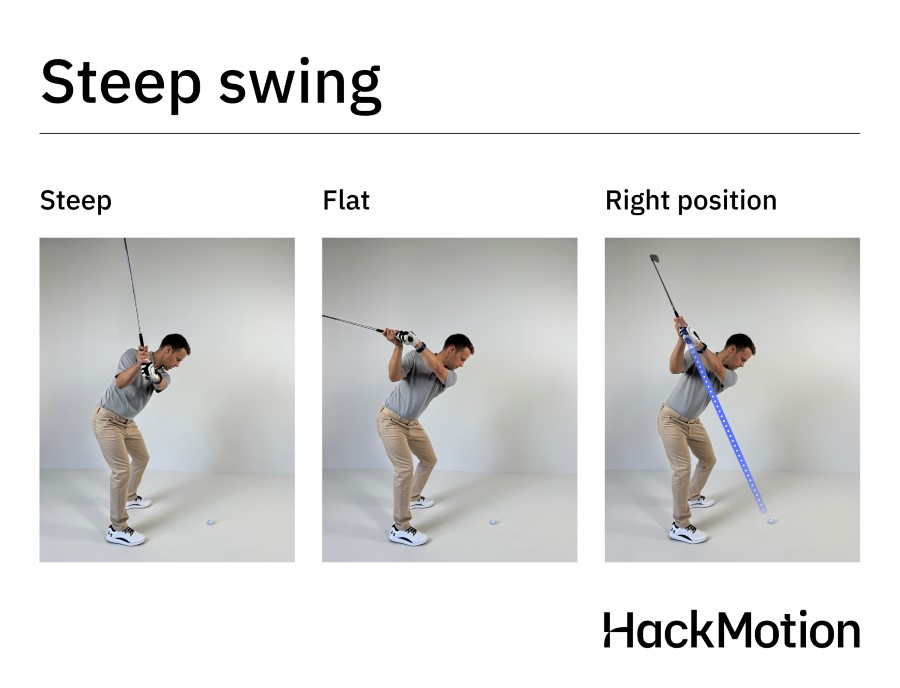Stop Hitting the Ground Before the Golf Ball: 6 Proven Fixes & Drills for Pure Contact
The chunk always happens at the worst time. You have a great lie, but instead of striking the ball cleanly, you hit behind it, and your golf ball advances just a few feet.
Hitting the ground before the ball means you don’t have the low point of your swing in the right place.
To fix a chunk, it’s best to understand why it’s happening and then work on some drills to get to a better impact position. Here are six ways to stop hitting the ground before the golf ball.
Key Takeaways
Here are the most important things you should know about hitting the ground before the golf ball.
- Low point is everything. Use towel or headcover drills to shift your strike forward and hit ball-before-turf consistently.
- Wrist angles control impact. Extended lead wrists cause fat shots, use HackMotion to train flexion and maintain shaft lean.
- Get weight forward early. Staying on your back foot leads to chunks. Feel pressure on the lead side before impact.
- Keep the head quiet. Any dipping or lifting shifts your arc. Mirror drills help stabilize your spine and low point.
Contents
Why Am I Hitting the Ground First?
Here is why you may be hitting the ground before the golf ball. Remember that great contact involves hitting the ball first and then the turf.
- Head drop or lift during the backswing.
- Lower-body slide instead of a hip turn.
- Ball too far forward, or you’re standing too close.
- Club path too steep or bottoms out too soon.
- Weight stuck on the trail foot at impact.
- Lead wrist extends (cups), killing shaft?lean.
6 Ways to Stop Hitting the Ground Before the Golf Ball
While some fixes for hitting the ground before the ball are simple (like ball position), others you’ll have to work on a bit. Try these simple steps to get this figured out.
Fix the Setup
Start by making sure your ball position and alignment are consistent. Sometimes, hitting the ground before the ball could be as simple as being reckless when addressing the golf ball.
Below is what a proper setup with your iron should look like.

When you practice at the range, set yourself up with an alignment station.
The station helps you visualize the perfect setup to get your shots straighter and ensure some consistency in your ball striking.
Alignment & Ball Position Drill – Step by Step:
- Target Line Stick: Lay one alignment stick on the ground pointing directly at your target.
- Feet Line Stick: Lay a second stick parallel to the first, where your feet should align.
- Ball Position Stick: Place a third stick perpendicular to the others to mark the correct ball position. For mid-irons, keep the ball position central.
- Repetition: Hit 10 balls, resetting your stance and alignment before each shot.
Keep the Head Quiet
Keeping your spine angle throughout the golf swing is very important. If your head dips at any point you have changed the low point and it drops behind the ball.
This video is a great way to work on low point control in your swing and learn to stop hitting the ground first.
To work on keeping your head quiet is to use a mirror:
Head Stability Mirror Drill – Step by Step:
- Set Up: Stand in front of a mirror and mark the position of your forehead using a dry-erase marker or small piece of tape.
- Slow Motion Swings: Make slow practice swings, focusing on keeping your head centered and the mark steady throughout the swing.
- Add a Ball: Head to the range and hit shots at 50% speed while maintaining the same head stability feel.
- Stay Centered: Feel like your head stays centered and stable — avoid letting it sway or drop throughout the swing.
Get Weight Forward Early
From the top of your backswing, you need to move your weight forward to your lead side. By the time impact comes around, the weight must be on the lead foot.
If your mass hangs back, the club bottoms out too soon, and you’ll hit the ground first.
Golfers who learn to get weight forward early (through proper pivot and rotation) tend to get more distance, better compression, and a straighter ball flight.
A simple alignment stick drill, where you drag the alignment stick along the ground, can help you feel your weight getting to the lead side with a bit of added resistance, like demonstrated in the video below.
- Video timestamp – 2:30
Alignment Stick Impact Drag Drill – Step by Step:
- Grip the Stick: Hold an alignment stick like a golf club, angling it behind you so it stays low to the ground.
- Drag Through Impact: Slowly drag the stick along the ground through the follow-through area, feeling the correct motion of your hands and arms leading the club.
- Lead Side Pressure: Focus on finishing with 80-90% of your weight on your lead foot and your chest pointing upward.
- HackMotion Feedback: Wear your HackMotion while doing this drill and look for lead wrist flexion (bowed wrist) and forward shaft lean through impact.
Control the Radius (Lag)
There are two ways to improve the lag in your golf swing and ensure that you are not releasing the club too early or casting.
The first is the HackMotion casting drill, which is located in the HackMotion app and can be worked on in real time.
Fix Your Casting with HackMotion
Train to fix casting by generating power with your core and lower body.
HackMotion Casting Drill – Step by Step:
- Start the Downswing Correctly: Make a normal backswing, then begin the downswing by shifting your weight to your lead side and rotating your hips. Focus on not pulling down with your arms.
- Monitor Trail Wrist Extension: Use HackMotion to track your trail wrist. Keep it extended (bent) as you transition—don’t “throw” the club early.
- Let the Club Lag: Let your arms drop naturally. The club should trail behind your hands to preserve power and avoid casting.
- Build Up Speed: Start with slow swings and gradually increase speed, all while maintaining the trail wrist bend through the downswing.
HackMotion Tip: If the trail wrist extension graph flattens too early, you’re casting. Train to hold the extension longer for cleaner contact and better lag.
Another great drill to help you maintain this lag is the Handle Extension Drill, as seen in the video below by Rob Cheney.
The main idea is to grip an alignment stick with your club or even tape a stick down the shaft so it extends past the top of your golf club.
- Video timestamp – 5:35
Alignment Stick Lag Drill – Step by Step:
- Attach the Stick: Tape an alignment stick down the shaft so it extends past the grip and runs along your lead side.
- Waist-High Swings: Make small swings where the club only reaches waist-high on both sides. Focus on keeping the stick from slapping your lead side.
- Gradual Progression: As you get more consistent, build up to fuller swings—but only when you can miss your side at least 8 out of 10 times.
- Maintain Lag: The goal is to prevent early release and hold your wrist angles through impact for better compression.
Shift the Low-Point Forward
If your club is still striking the ground before the ball, you may need to work on shifting the low point forward.
Sometimes the best way to do this is to add a physical barrier that keeps you from striking the ground before the ball, like Rob does in the video below.
- Video timestamp – 7:30
All you need to work on this drill is a simple golf towel, but you could also use a headcover.
Towel Low Point Control Drill – Step by Step:
- Set the Towel: Fold a towel and place it about one grip-length behind the golf ball.
- Hit Clean Shots: Hit shots while avoiding contact with the towel on both the backswing and downswing.
- Challenge Yourself: As your ball-first contact improves, gradually move the towel closer to the ball to tighten your control.
Work on Golf Ball Compression
Finally, you may hit the ground before the golf ball because you are slowing down or stalling through impact.
The goal through impact is to always accelerate and keep the hands forward and ahead of the ball, like Rob demonstrates in the video below.
- Video timestamp – 3:55
Post-Impact Wrist Check – Step by Step:
- Mini Swings: Make short swings and stop right after impact when the shaft and arms reach parallel to the ground.
- Feel the Wrist Angles: At that stop-point, feel a flat lead wrist and a bent (extended) trail wrist.
- Gradually Lengthen: Increase the size of the swing while keeping that same stop-point after impact.
- Use HackMotion: Check that your lead wrist shows more flexion post-impact than it did at setup.
Final Thoughts
Chunks disappear when the club’s low?point moves just ahead of the ball.
Use the drills above and your HackMotion to make sure you are striking the ball first and then the turf.
Your wrist angles control the clubface through impact, and having the wrist angles in the correct position will make it easier to stop hitting the ground before the ball.





